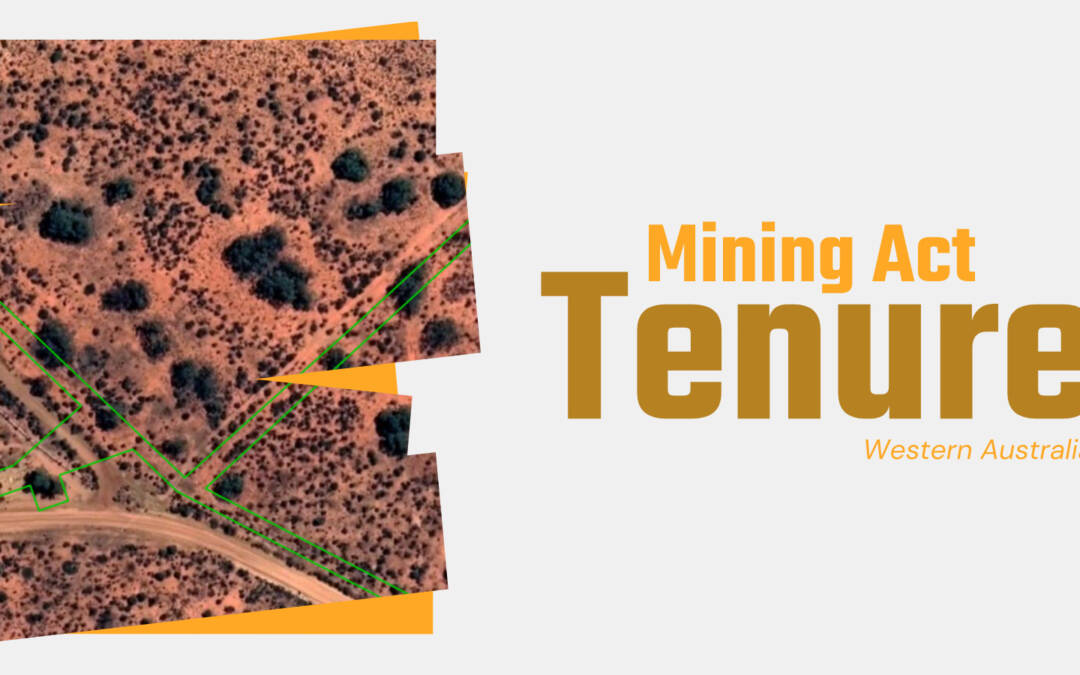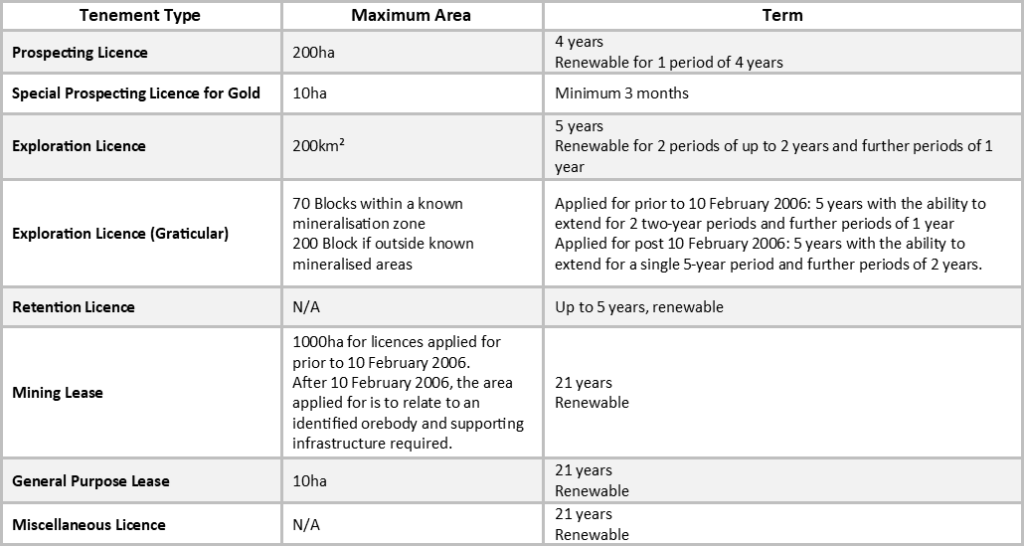Whether you’re a large International Mining Company or have just picked up your first metal detector, there are laws, licences and permits surrounding land disturbance associated with exploration and mining activities that must be adhered to.
Before conducting any exploration or mining activities, you must complete an application for mining tenure as defined under the Mining Act 1978 at the Mining Registrar’s office or via the Department of Mines, Industry Regulation and Safety website (DMIRS, 2021). The kind of mining tenure you apply for depends on the activity you plan to conduct in the area. The land type also needs to be a consideration as you are only permitted to apply for mining tenure on particular land types.
You do not need to apply for a mining tenement if operating under a Miner’s Right. A Miner’s Right allows the holder to prospect on Crown land and take/keep samples and specimens of any ore material up to 20 kilograms. The holder of a Miner’s Right is also permitted to fossick on Crown land, providing they have written consent from the occupier of the land and the mining tenement holder (DMIRS, 2021).
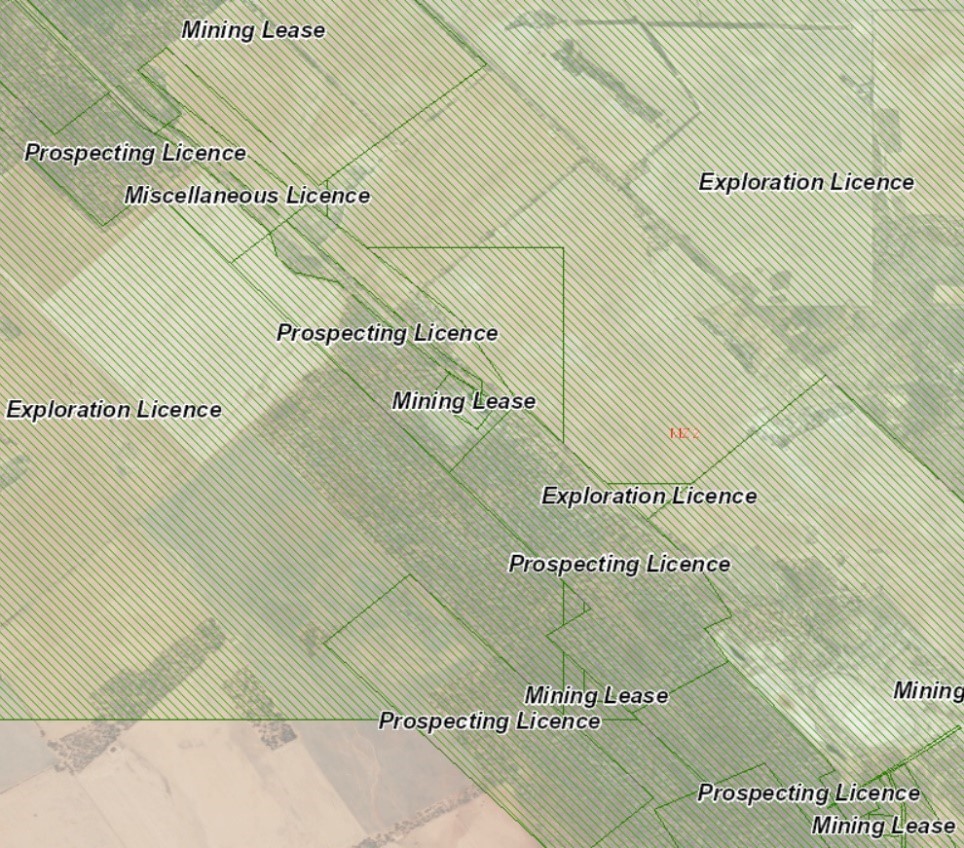
Types of Mining Tenure
There are multiple types of Mining Tenure that an individual or company can apply for, and each is accompanied by different fees, charges and conditions. A complete list of the fees and charges can be found on the Mining Tenements Explained page under the “How do I” section on DMIR’s website.
Each tenement or licence is issued a tenement ID that indicates the type of tenement, the associated mineral field, and the tenement number (i.e. M24/86, where “M” is the tenement type, 24 is the mineral field prefix code, and 86 is the tenement number). Please see Table 1 for a list of tenements and their associated letter code (DMIRS, 2021).
Table 1 Tenement Type ID (DMIRS, 2021)

Mining Tenure Explained
Each tenement or licence has different activities and conditions associated with the approvals; Table 2 outlines the maximum size and lease term for each type of tenure. There is no maximum number of licences or tenements that can be held by an individual or company at one time, except for a special prospecting licence for gold, which has a maximum of 10 to be held at one time.
Prospecting licences
Prospecting licences are for prospecting purposes only, which allows the holder to extract up to 500 tonnes of material from the ground, including overburden.
Special Prospecting Licence for gold (SPL)
An SPL can be applied for within an existing Prospecting Licence, Exploration Licences or Mining lease, providing they have obtained an SPL and the activities do not hinder the co-existing tenement. A small prospector licence allows for a small prospector to have access to gold deposits up to 50m depth, unless the Minister has advised otherwise (DMIRS, 2013).
Exploration Licences
Holders of an exploration licence may extract up to 1,000 tonnes of material from the ground, including overburden. Unlike most tenure, exploration licences are measured in blocks rather than hectares, as per the graticular boundary system introduced in June 1991. The licence holder is required to surrender part of an exploration licence towards the end of the licence term. If applied for prior to 10 February 2006, the holder must surrender 50 per cent of the licence at the end of both the third and fourth year of the term. For licences applied for after 10 February 2006, the holder is required to surrender 40 per cent of the licence at the end of the sixth year of the term.
In addition to the application form, applicants must also supply:
- The proposed method of exploration
- Details of the proposed work programme
- Estimate of proposed expenditure on the licence
- Applicant’s technical and financial resources
Retention Licences
A retention licence is a holding title when a mineral resource has been identified but cannot be further explored or mined (DMIRS, 2021). It may be granted for the whole or any part of the land within the boundaries of a prospecting licence, exploration licence or mining lease. As outlined in Section 70C (2) of the Mining Act 1978, the reasons a mineral resource may be unable to be further explored or mined are as follows:
- The identified mineral resource is uneconomic or subject to marketing problems although that resource may reasonably be expected to become economic or marketable in the future; or
- The identified mineral resource is required to sustain the future operations of an existing or proposed mining operation; or
- There are existing political, environmental or other difficulties in obtaining requisite approvals.
Unless required by the Minister, a retention licence does not need to be marked out (DMIRS, 2021).
Mining Lease
The holder of a mining lease is permitted to mine the land, take and remove minerals and any other activity necessary to effectively carry out mining operations. Mining activity will be subject to conditions of the title.
In addition to the application form, applicants must also supply:
- a mining proposal in accordance with the Departments Mining Proposal Guidelines; or
- a mineralisation report containing details and be accompanied by a supporting statement to include the details in sections 74 (1a)
- a statement of mining operations and a resource report that complies with the JORC Code and that has been made to the Australian Securities Exchange Ltd.
General Purpose Leases
A General Purpose lease can be used for operating machinery or storing and/or treating tailings. General Purpose leases have a maximum depth of 15 meters unless another depth is specified. Applications must include a development and construction proposal or a statement of intention for the lease.
Miscellaneous Licences
Miscellaneous licences are generally used for roads, pipelines or water with no maximum area and can be applied for over other mining tenements. (DMIRS, 2021). Although there is no specific requirement to survey a miscellaneous tenement, it can be beneficial for quality control purposes, especially for long corridors. If it is marked out incorrectly, it can significantly affect the placement of your transport and service infrastructure corridors, as seen in Figure 2. Miscellaneous licences can be any shape but should be straight lines where practical (DMIRS, 2021).
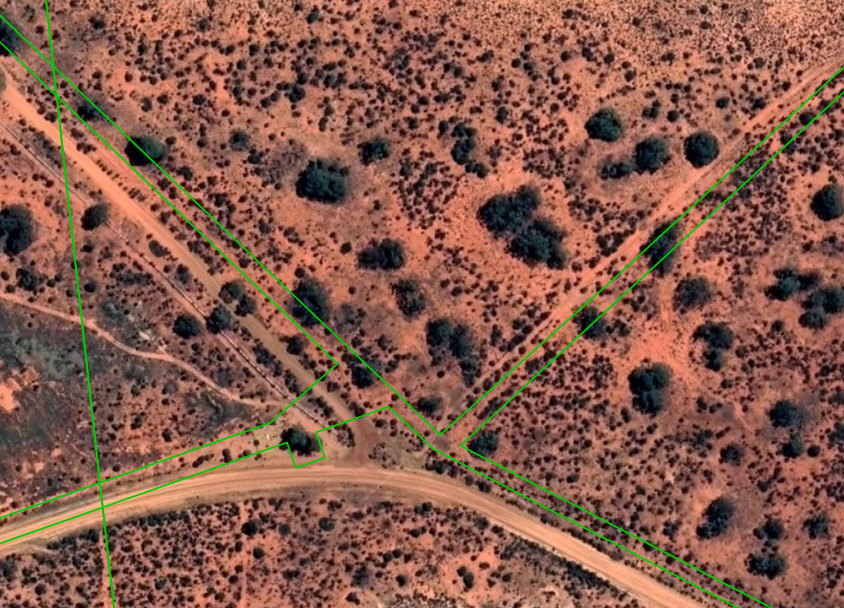
Table 2 Tenure size and term conditions
Surveying, Marking out and Tenement Shape
When surveying and marking out Mining tenure, it should, where possible, be rectangular in shape, with the exception of Miscellaneous Licences, Retention Licences and Exploration Licences. Natural features or existing mining tenement boundaries can prevent a tenement from being rectangular, if this is the case, the boundary needs to be straight and parallel to an opposite boundary or at a right angle to an adjacent boundary where possible (DMIRS, 2021). Tenements must be marked out on the ground, based on the following guidelines:
- By fixing firmly in the ground or as close as practicable to each corner or angle of the land concerned a post projecting at least one meter above the ground;
- By gutting two clearly identifiable trenches or placing two rows of stones at least one metre long from each post in the general direction of the boundary lines; and
- Then by fixing firmly to one of the posts as the datum post, the notice of marking out in the Form No. 20 in the First Schedule.
Exploration, Retention Licences, Miscellaneous Licences and prescribed land prospecting licenses and prescribed Mining Leases do not need to be marked out on the ground.
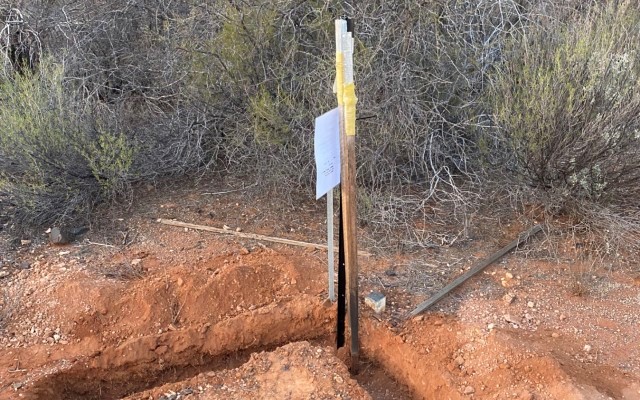
Land open for mining
Mining tenement applications may be made on Crown land (including pastoral leases), Public reserves and Private land. Along with pastoral leases, Crown land includes reserves for common and public utility, leases for grazing purposes, leases for the use and benefit of the Aboriginal inhabitants and leases for timber purposes. Application conditions and processes are different for each type of land which is open for mining.
Crown land
On Crown land, a miner, a person who holds a miner’s right or has been granted a mining tenement, may be able to prospect under a miner’s rights, mark out a mining tenement and perform exploration or mining activities subject to a mining tenement being granted.
- Miners are responsible for advising the pastoralist or manager of a pastoral lease of their planned activities prior to commencing mentioned activities.
- Miners are responsible for any damage caused during the activities conducted.
- The miner must advise the pastoralist within 14 days of lodging a mining tenement application via registered post.
- The pastoralist must be notified when the mining tenement is granted or transferred.
- Mechanical equipment used for clearing, gridding or costeaning cannot be used on the tenement unless a Program of Work (POW) or a Mining Proposal has been approved.
Reserves and Commonwealth Land
You are not permitted to conduct mining activities, including prospecting and exploration, on reserved land or Commonwealth land without written consent from the Minister responsible for the Mining Act. Along with Ministerial consent for mining activities, there are also restrictions to enter and/or mark out Commonwealth land and certain types of reserved land:
- Commonwealth land, national parks, class “a” nature reserves and any other class ‘A’ reserves within the South West Land Division, Esperance and Ravensthorpe Municipal Districts require consent from the Minister prior to entering the area or marking out tenements.
- State forests or timber reserves may only be applied for or marked out prior to approval from a regional Department of Biodiversity, Conservation and Attractions officer.
- An entry permit must be obtained from the Department of Planning, Lands and Heritage prior to entry onto or through Aboriginal reserves.
Private Land
To enter, search for minerals or mark out mining tenure on private land, a person or company must first obtain a permit issued by a Mining Warden. A permit may not exceed a 30-day period and entitles the holder to:
- Enter on private land;
- Search for minerals;
- Detach and remove samples of any vein or lode out-cropping on the surface totally 13kg, unless additional samples is authorised by the owner:
- Mark out a mining tenement, but not mine or otherwise disturb the surface. (DMIRS, 2014)
Navigating the type of activities, you can conduct on certain land types, mining tenure licences and leases can be time consuming and complex. If you are in need of mining tenure advice or need help navigating the application process, please contact Integrate Sustainability on 08 9468 0338 or enquiries@integratesustainability.com.au.
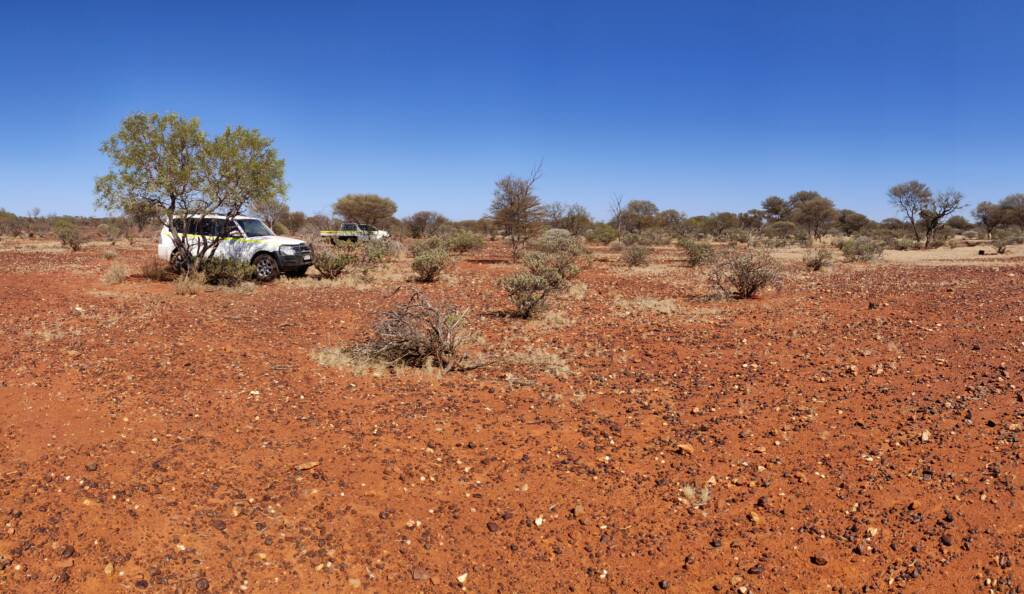
References
DMIRS. (2013, 02 01). Special prospecting licence (for gold). Retrieved from Department of Mines, Industry Regulation and Safety: https://www.dmp.wa.gov.au/Documents/Minerals/132298_Mining_Notice_Special_Pros_Licence.pdf
DMIRS. (2014, 09 02). Private Land Provisions. Retrieved from Department of Mines, Industry Regulation and Safety: http://www.dmp.wa.gov.au/Documents/Minerals/Minerals-Mining_Notices_Private_Land_Provisions.pdf
DMIRS. (2021, 08 12). Mining Tenement Abbreviations. Retrieved from Department of Mines, Industry Regulation and Safety: http://www.dmp.wa.gov.au/tgwhelp/mining-tenement-abbreviations-638.aspx
DMIRS. (2021, 08 18). Mining Tenement Explained . Retrieved from Department of Mines, Industry Regulation and Safety: http://www.dmp.wa.gov.au/Documents/Minerals/Mining_Notices_Basic_Provisions.pdf
DMIRS. (2021, 08 12). Mining Tenements explained. Retrieved from Department of Mines, Industry Regulation and Safety: http://www.dmp.wa.gov.au/Minerals/Mining-Tenements-explained-5145.aspx
DMIRS. (2021, 08 20). Mining Tenements explained. Retrieved from Department of Mines, Industry Regulation and Safety: http://www.dmp.wa.gov.au/Documents/Minerals/Marking_Out_and_Applying_for_Mining_Tenements.pdf
DMIRS. (2021, 08 19). Mining Tenements Explained. Retrieved from Department of Mines, Industry Regulation and Safety: http://www.dmp.wa.gov.au/Documents/Minerals/Marking_Out_and_Applying_for_Mining_Tenements.pdf
Small Caps. (2021, 08 02). Western Mines Group seeks to expand newly granted Jasper Hill project. Retrieved from Small Caps: https://smallcaps.com.au/western-mines-group-expand-newly-granted-jasper-hill-project/

